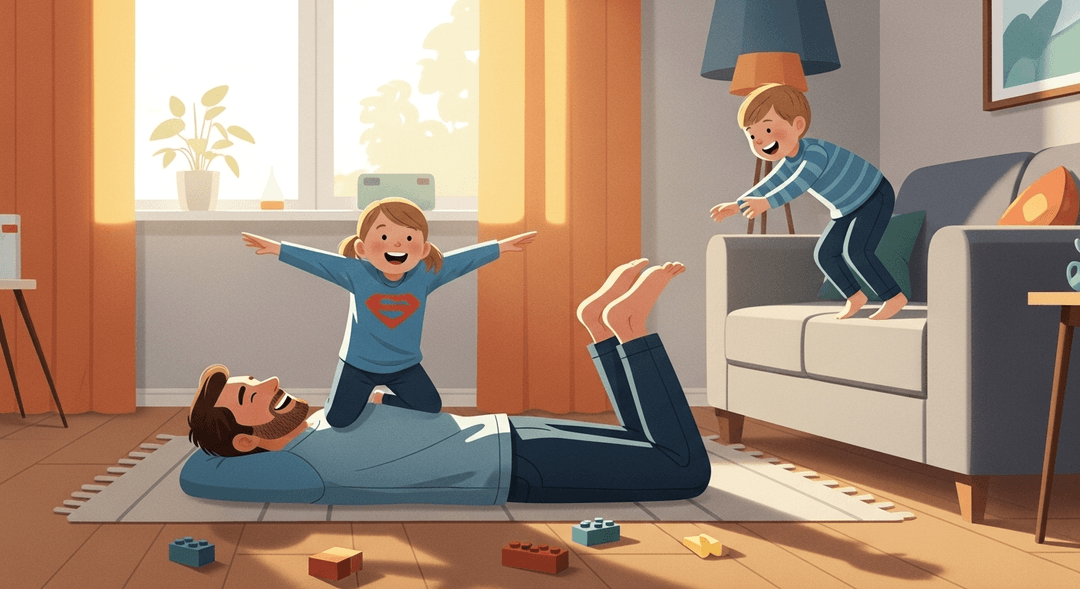Engage in Rough-and-Tumble Play (Safely)
Remember when you thought 'wrestling' was just for WWE and not, say, your living room at 7:13am? Welcome to the world of rough-and-tumble play, where you’re simultaneously a jungle gym, a crash pad, and an amateur referee—bonus points if you don’t get a Lego embedded in your knee. If you’re looking to burn off your kids’ energy (and maybe your own existential dread), this one’s for you.
This kind of play is like emotional CrossFit for kids: it teaches them how to handle excitement, frustration, and even disappointment—all while their brains are growing connections for self-control, empathy, and resilience. For parents, it’s a chance to bond, get goofy, and maybe sneak in a mini workout (or at least justify that second coffee).
How to do it
First, clear a safe space. Move any pointy furniture out of the way and, for the love of knees, check for stray toys.
Set some ground rules:
- No hitting faces
- No surprise ninja moves
- Everyone can call a timeout at any time
Keep it playful. Encourage lots of laughter, silly sound effects, and dramatic slow-motion falls.
Watch your kid’s cues. If they seem overwhelmed or upset, dial it back.
Above all, keep it short and sweet. Leave them wanting more—not needing an ice pack.
